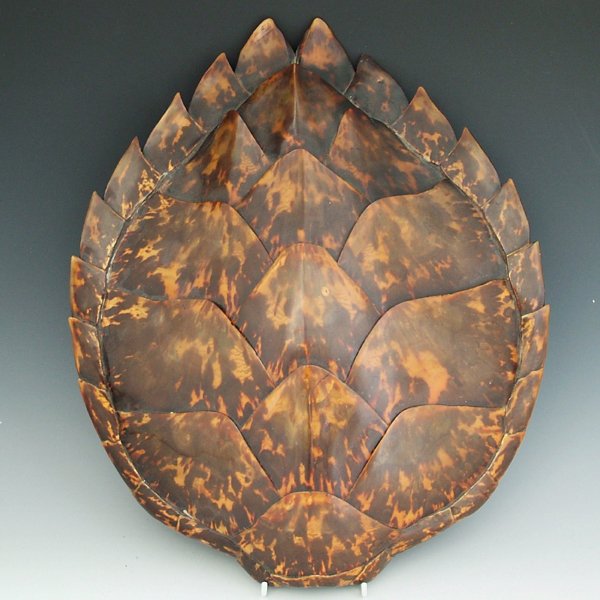
A Leatherback (Dermochelys coriacea) female ashore for nesting. In fact, sea turtles eat, sleep and mate in the sea, never setting foot on land once they’re in the water, except for the females’ fleeting nesting visits.
#Hawksbill sea turtle predators full
Photo: © Ralph FullerĬable nature programs are full of footage of female sea turtles coming ashore on moonlit nights to lay eggs in the sands and, subsequently, of adorable little hatchlings making their way into the sea. Green sea turtles (above) sport one pair of prefrontal scales between their eyes, Hawksbills (right) two pair.
#Hawksbill sea turtle predators series
A series of thin nerves are embedded in the shells, so they can tell when they’ve been touched. The number of scutes, the shape of the head and the number of prefrontal scales between the eyes are key species identifiers. The carapaces of hard-shelled turtles are covered by hard keratinous segments called scutes. Turtle image: Public Domain Graphic: Ralph Fuller. Another clue: Flatbacks are found only in waters off Australia’s northern coast. Upturned marginal scutes mark this one as a Flatback. Four coastal scutes along each side and one pair of prefrontal scales between the eyes characterize both Green and Flatback Sea Turtles. (Leatherbacks differ in that their shells instead are, well, leathery. They’re fixed parts of their owners’ bodies, not structures they can leave behind or shed. The shells in all sea turtles except Leatherbacks are hard, broad structures composed of bone and cartilage adapted from ribs, pelvis and other skeletal elements. And, those strong front flippers. Tapering also deprives them of a land turtle defensive measure: They can’t withdraw their heads and legs into their shells. Obviously, they’re related to their terrestrial turtle and tortoise cousins but adapted to life in the sea with tapered shells that reduce drag and facilitate swimming. The others came later, but it’s said they haven’t changed much for 110 million years. Sea Turtles have been in Planet Earth’s oceans since Leatherbacks emerged some 150 million years ago, when their fellow reptilian dinosaurs roamed.

Green Sea Turtles (Chelonia mydas) get their name from their body fat, a result of their algae diets, not from any greenish outward appearance. Flatbacks and the two Ridley species are more restricted, at least in nesting.

Four of them – Leatherbacks, Greens, Hawksbills and Loggerheads – are found throughout the Atlantic/Caribbean and Indo/Pacific basins. They’re found in oceans worldwide, even though there are only seven sea turtle species, identifiable by their scute and prefrontal scale patterns: Leatherbacks, Greens, Hawksbills, Loggerheads, Flatbacks, Olive Ridleys and Kemp’s Ridleys. And, anyway, they don’t go on shore much. They’re streamlined, with large, powerful front flippers that give them the wherewithal for great speed when they need it. SEA TURTLES MAY BE LUMBERING ON SHORE but they’re perfectly suited for the life aquatic. With their cool shells, patient demeanors and adorable hatchlings, who wouldn’t? The broad carapaces covering their backs – punctuated by patterns of scutes, or hard scales – practically tell stories and present beautiful images. Photo: © Ralph FullerĮverybody loves sea turtles. Beak-shaped snouts, four costal scuts and four prefrontal scales characterize Hawksbill Turtles (Eretmohelys imbricata).


 0 kommentar(er)
0 kommentar(er)
